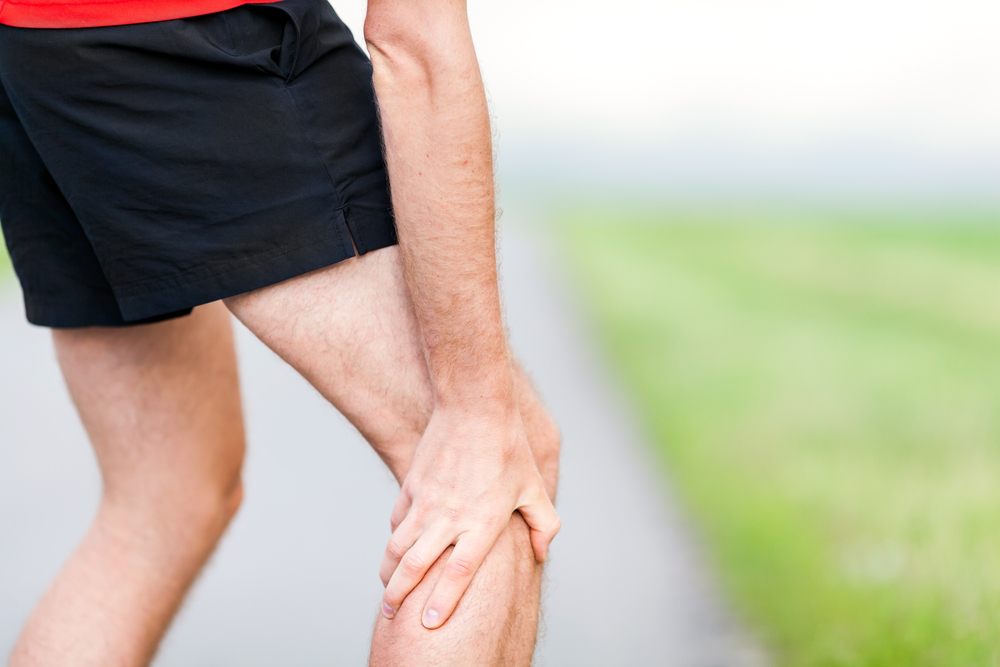Cramp happens when muscles contract involuntarily, interfering with flow of blood to the area. It may lead to muscle damage in severe cases. Calf muscles (soleus and gastrocnemius) are susceptible to cramping in running. People who are overweight, ill and those aged 65 and above are more likely to get calf cramps during running. However, cramps can actually affect anyone, either during or after running. Then what causes calf cramping?

What Causes Calf Cramps While Running?
The cause of calf cramps has never been conclusively determined. However, some factors believed to play a part in the occurrence of cramps include:
1. Dehydration
When the body is dehydrated due to inadequate water intake or running in hot conditions, the volume of blood is reduced. This may affect the proper working of muscles and lead to calf cramps.
2. Low Potassium or Sodium Levels
Sweating causes loss of salts, including minerals such as sodium and potassium. The imbalanced electrolytes can cause calf cramps.
3. Low Carbohydrate Levels
The body depends on glucose for energy and carbohydrates are the main source of glucose. If you don’t take enough carbohydrates, your muscles may not get sufficient fuel, which can cause calf cramps.
4. Tight Muscles
A very tight muscle can squeeze blood out or restrict its circulation in the area. This can interfere with the supply of blood and nutrients, causing the muscle to cramp due to starvation.
5. Other Causes
- Calf cramps during running can result from over-exertion and muscle fatigue.
- Cramping can also happen due to muscle strain arising from sudden movements or inadequate warming up before running.
- Some medical conditions, including kidney disorders, mineral depletion and nerve compression may cause calf cramps.
- Studies have indicated that calf cramps while running are more likely in athletes with family history of cramping and those with personal history of muscle cramps, ligament or tendon injuries.
How to Manage Calf Cramps
Manage the calf cramps with the following measures.
1. Hydration
Take water before, during and after a run to keep your body hydrated. If you run or work out for more than an hour, take a drink containing carbohydrates, or carbohydrates and protein. To ensure you are well rehydrated, check your weight before and after exercises and replace every pound lost with 20 ounces of fluid.
2. Electrolyte Replacement
Electrolytes are lost when you sweat. You can replace lost electrolytes by drinking mineral and electrolyte-rich sports beverages or taking energy supplements. You can also consider taking salt tablets if you are involved in extended running.
3. Stretches
You can reduce the pain of cramping by gently stretching the calf muscles. Even after the pain has subsided, you can stretch to soothe the tight muscles.
4. Massage
You can break the spasm by gently massaging the calf muscles. This will improve blood circulation and normalize the state of the muscle. Massaging the muscle even after the cramping will help restore proper muscle function.
5. Ice and Heat
You can reduce pain and calf cramps while running by applying ice to the muscle when cramping begins. If the pain goes on for days after cramping has stopped, you can apply heat to help the muscle relax and improve blood circulation.
6. Moving
You can get rid of calf cramps by taking a walk. Walking signals the need for the affected muscles to follow the sequence of contracting and relaxing. It is similar to resetting the muscle to operate normally.
When to See the Doctor
Some cases of calf cramps may be symptoms of medical conditions, such as inflammation of the sciatica nerve, arthritis, peripheral artery disease (PAD) and inflammation of veins within the leg (phlebitis). These conditions require medical attention.
Call or visit your doctor in case of the following:
- Swelling in one leg
- Constant pain in the leg
- Cold, unusual color or numbness in one leg
- Discoloration, pain or the feeling of heat along a vein in the leg
How to Prevent Calf Cramps
Calf cramps are preventable. Try the following tips.
- Take Water. Water keeps your body well hydrated, so that your blood has the right consistence for easy circulation and transport of nutrients to the muscles and the rest of the body.
- Take Vitamins and Minerals. Minerals such as zinc and magnesium, and vitamins such as B, D and E can help prevent calf cramps while running.
- Jumping. Fatigued nerves within muscles can cause cramps. But you can prevent this from happening by doing some jumping drills several times a week.
- Warm Up. Warm up your muscles before vigorous running. This ensures that your muscles do not suffer a shock, reducing your risk of calf cramps.
- Compression. Reduce your risk of cramping by using compression sleeves or compression socks to restrict movement of the calf muscles, reducing muscle fatigue. This also improves blood circulation so that sufficient nutrients and oxygen get to the muscle.
- Arch Support. When the arch is unsupported, your calf muscles work harder, exposing them to fatigue and the risk of calf cramps.
